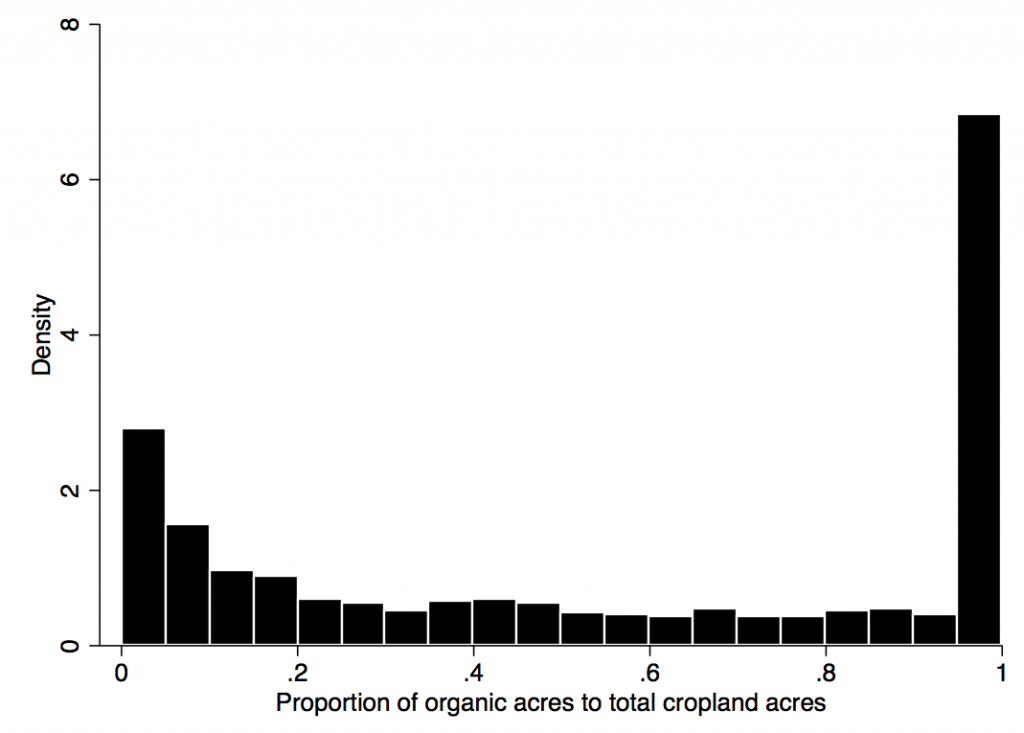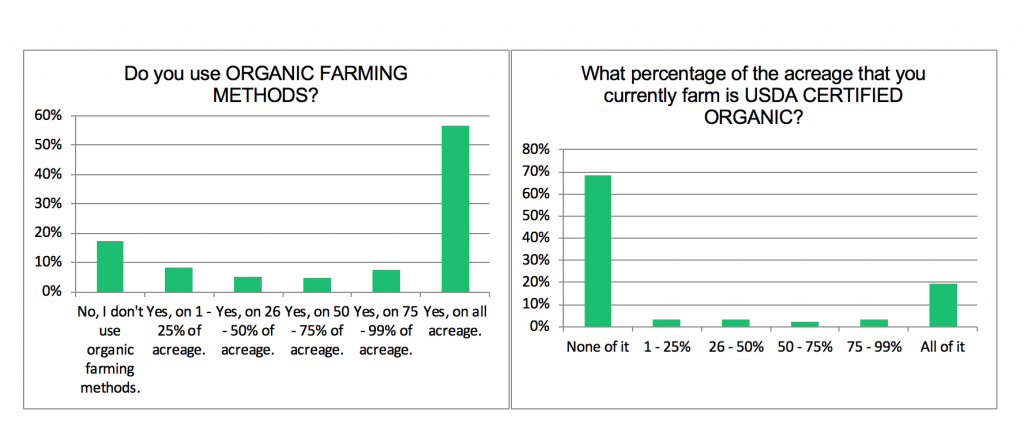Joe Janzen and I have been looking into whether and why organic farms pay more to rent land. (Spoiler alert: they do pay more.) We’ve been using USDA ARMS data from years 2003—2011, when that survey asked a crucial question. That question: “Of the total acres in this operation, how many acres were used to harvest certified organic crops?”
The ARMS provides us with a host of detailed financial information, including costs and revenues, but also acreage and farm type, among other things. One of the items I found most interesting was how much actual certified organic acreage a given organic farm has. Looking only at farms having any acres used to harvest certified organic crops, we computed the proportion of certified organic acres for those farms. The biggest category is 100%–farms with only organic production. But #2 is the category from 0-5%–meaning that, of the organic farms in our sample, there are quite a few with a relatively very small proportion of organic acreage.

Why would someone choose to place only a small portion of their operation in organic production?
A few ideas:
- I’ve heard a few producers around Montana interested or actively engaged in trying out organic production. They might be doing so on a trial basis, or they might be doing it as a diversification strategy. Access to both conventional and organic markets can spread risk across them.
- Some of these lower proportions could be because of transitional acres that aren’t officially certified organic. (Organic certification requires a three-year process during which organic processes must be followed but products cannot bear the organic label).
- Eric Belasco has some other ideas. From a survey he worked on last year examining barriers to crop insurance participation for organic farmers, it’s evident that many producers using certified organic practices don’t actually certify. (Instead, they might sell to farmers markets or CSAs where the official certification may not have the same benefit.) Nearly 60% of farmers responding said they used organic farming methods on all their acreage. But nearly 70% of respondents had no certified organic production. What we are calling organic farms from the ARMS survey have all actually completed the process of certification on at least some of their acres. But there might be reasons some fields or areas might be more difficult to certify than others.

Source: Belasco, Eric. 2018. “Understanding Crop Insurance Barriers for Organic and Diversified Farms” Presented at SCC-76 Annual Meeting, Kansas City, MO.
These are just ideas, and we haven’t tested any of them out. Thoughts? Ideas? We’d love to hear them. For more on organic trends, check out this earlier post.
(Photo by Karim D. Ghantous is licensed under CC BY 4.0)

